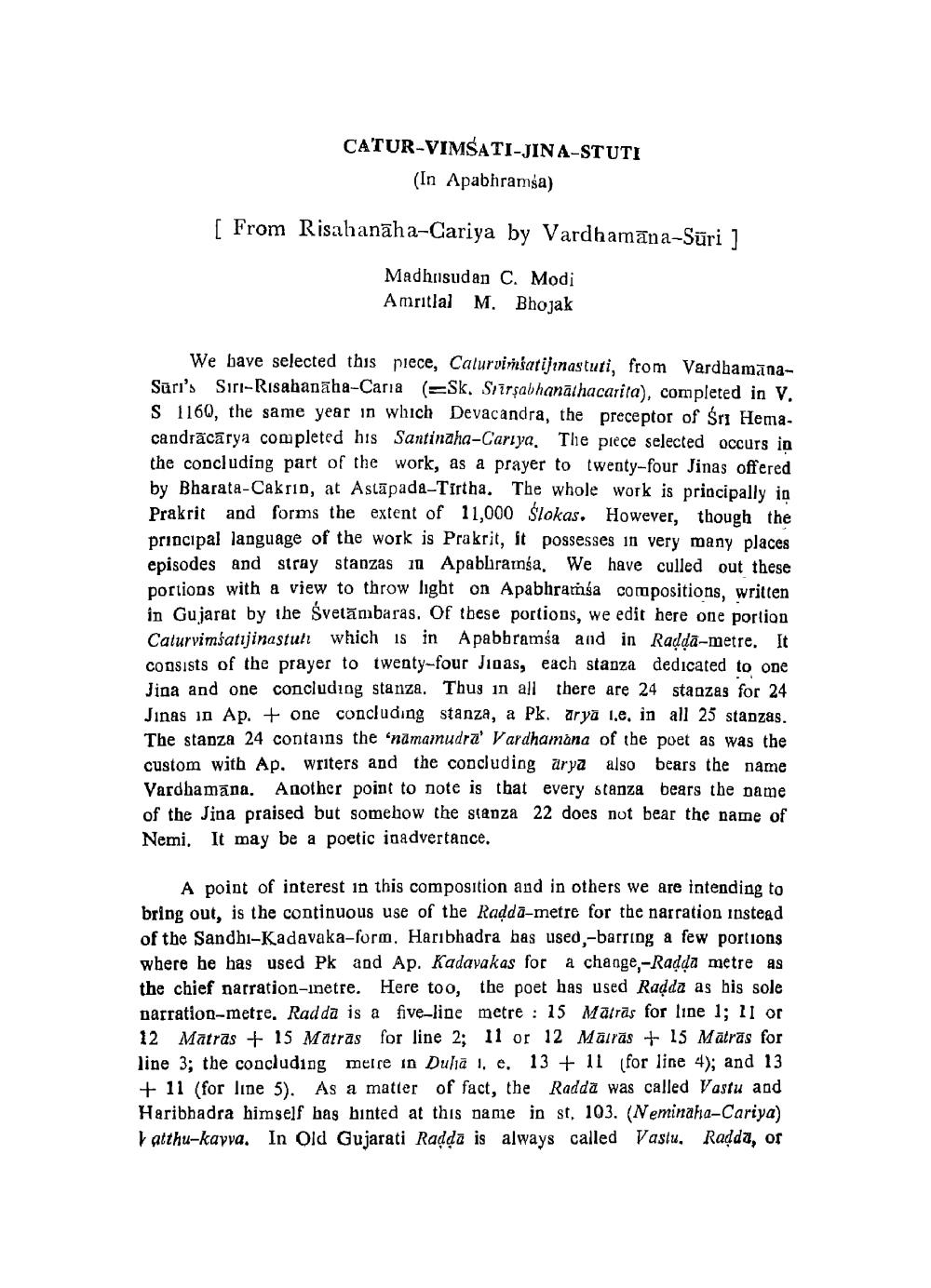________________
CATUR-VIMSATI-JINA-STUTI
(In Apabhramia)
[From Risahanaha-Cariya by Vardhamana-Süri ]
Madhusudan C. Modi Amritial M. Bhojak
We have selected this piece, Caturobhatijnasturi, from VardhamanaSan's Sir-Risahankha-Caria (Sk. Sriralhanathacarita), completed in V. S 1160, the same year in which Devacandra, the preceptor of Sri Hemacandracarya completed his Santinaha-Cariya. The piece selected occurs in the concluding part of the work, as a prayer to twenty-four Jinas offered by Bharata-Cakrin, at Astapada-Tirtha. The whole work is principally in Prakrit and forms the extent of 11,000 Slokas. However, though the principal language of the work is Prakrit, it possesses in very many places episodes and stray stanzas in Apabliramia, We have culled out these portions with a view to throw light on Apabhramsa compositions, written in Gujarat by the Svetambaras. Of these portions, we edit here one portion Caturvimbatijinastult which is in Apabhramia and in Radda-metre. It consists of the prayer to twenty-four Jinas, each stanza dedicated to one Jina and one concluding stanza. Thus in all there are 24 stanzas for 24 Jinas in Ap. + one concluding stanza, a Pk. arya e, in all 25 stanzas. The stanza 24 contains the 'namamudra' Vardhamana of the poet as was the custom with Ap. writers and the concluding arya also bears the name Vardhamana. Another point to note is that every stanza bears the name of the Jina praised but somehow the stanza 22 does not bear the name of Nemi. It may be a poetic inadvertance.
A point of interest in this composition and in others we are intending to bring out, is the continuous use of the Radda-metre for the narration instead of the Sandhi-Kadavaka-form. Haribhadra has used,-barring a few portions where he has used Pk and Ap. Kadavakas for a change,-Radda metre as the chief narration-metre. Here too, the poet has used Radda as his sole narration-metre. Radda is a five-line metre: 15 Matras for line 1; 11 or 12 Matras + 15 Matras for line 2; 11 or 12 Mairas + 15 Mātrās for line 3; the concluding metre in Duha 1, e. 13+ 11 (for line 4); and 13 +11 (for line 5). As a matter of fact, the Radda was called Vastu and Haribhadra himself has hinted at this name in st, 103. (Neminaha-Cariya) atthu-kayva. In Old Gujarati Radda is always called Vasiu. Radda, or




